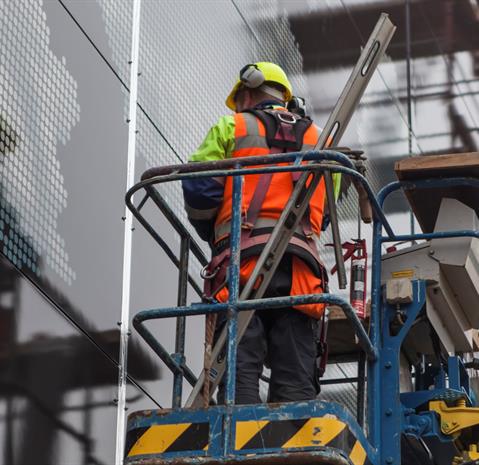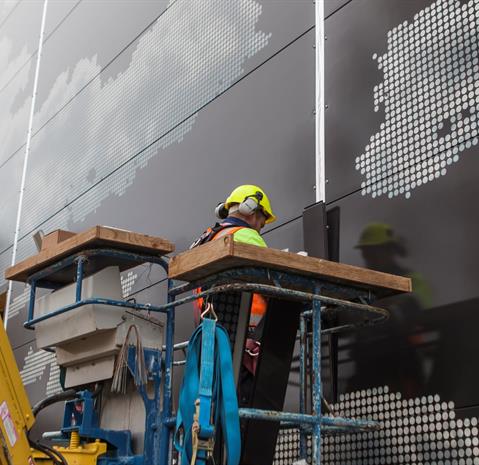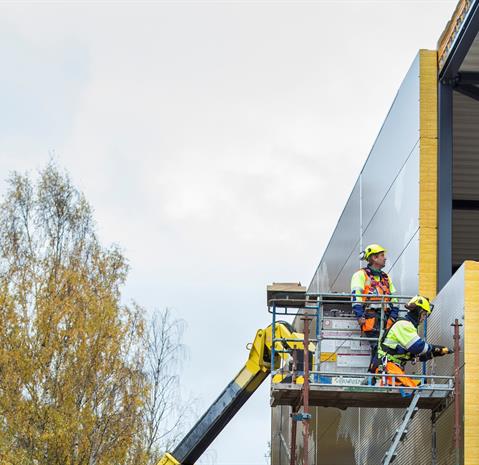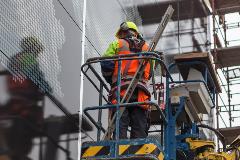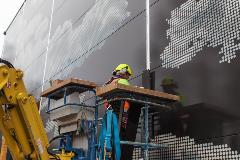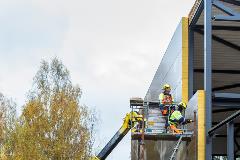Sandwich panels manufactured by Ruukki are used in industrial, logistics and commercial buildings as well as in public buildings. A sandwich panel is a prefabricated wall element consisting of an insulation core between two thin steel sheets.
Although Ruukki panels are manufactured indoors, they go on the outside wall of the customer’s building, where they are often installed in varying and demanding conditions.
Regulations made to be complied with
Each country has its own regulations as to how panels are installed safely. Simo Heikkilä, who works in product development at Ruukki Construction, emphasizes the importance of complying with the rules irrespective of the country concerned.
Lifting tools (hoists) are used in the installation of most panels. In Europe, hoists must have CE marking and be accompanied by operating instructions and an indication, for example, of the maximum load.
“Besides complying with the instructions, fitters must check the condition of the machinery and equipment, and when lifting must use a securing strap to prevent the panel from falling,” adds Simo Heikkilä.
Fitters must wear the safety equipment required by the situation or otherwise prescribed. Safety harnesses must always be worn when working in an aerial platform or where there is otherwise a risk of falling.
Recognize and avoid risk situations
No-one must go under a panel during installation. Even though panels are fairly light, even a light panel can inflict damage on anyone under it.
The weather and particularly the wind affect panel installation. Panels can be as much as 12 meters long and 1.2 meters high, which means the wind can move them uncontrollably during lifting, thereby risking the safety of fitters or damaging the panels if they collide with something when being lifted. When lifting gets out of control, the panel could nudge the aerial platform where the fitters are.
The construction site or terrain contours mean the panels might have to be lifted without the hoist operator properly seeing the panels or installation site. This can occur, for example, if the corner of the building blocks the view. Lack of visual contact is always a risk.
A risk situation also arises in the final step of installation when the securing strap is removed and if fine installation adjustment without the strap is involved. In this step, too, never place hands under the panel being installed.
Remove the protective film on the panel surface before installation. Using a suction loader, where the protective film comes between the hoist and the panel, to make the lift also creates a risk situation because the hoist grip is weaker.
Recklessness is toxic for safety
Recklessness and haste are usually toxic for occupational safety and good planning can reduce work safety risks. The less a panel moves, the safer total installation work. High quality is also retained when there is a reduced risk of the panel being damaged when being moved.
“It’s advisable to choose a level terrain when unloading panel packages so that there is no need to move the panels to another place ahead of installation. It’s advisable to store the panels so that they are already in the right direction for installation. This means they no longer need to be turned,” explains Simo Heikkilä.
Panel installation instructions are available on the Ruukki website and hoist and equipment operating instructions must always be available at the construction site. Compliance with careful structural plans and specified details ensure both safety and quality.





.tmb-250x190.jpg?sfvrsn=607438b5_1)






